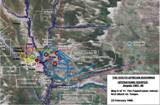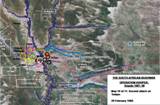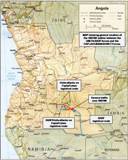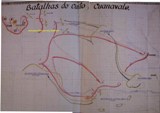| SOUTH-AFRICAN BUSHWAR WEBSITE OPERATIONS MODULAR - HOOPER - PACKER - DISPLACE - 1987 - 1988. SADF/UNITA against the FAPLA/CUBAN/SOVIET Forces |
 |
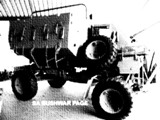 |
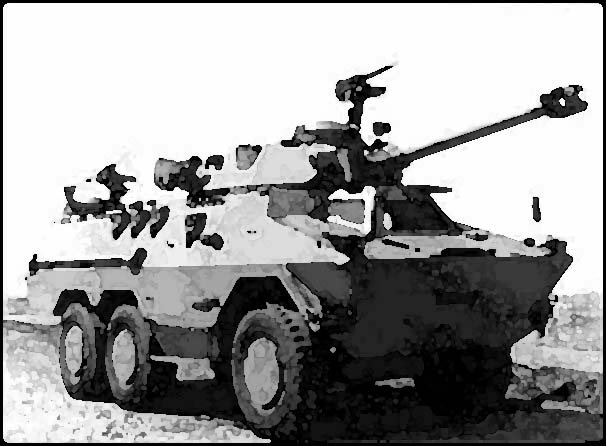 |
| As a continiuation of the Angolan civil war that started prior to the planned independance day of 11 November 1975; the MPLA, strongest of the 3 liberation movements, through armed action, drove the opposition UNITA and FNLA forces out of Luanda the capital city, and continued with armed action against it rivals, till the end of hostillities in 1990. This armed conflict was not only an Angolan internal affair, but a manifestation of the East-West stand-off during the Cold War. The communist east Bloc supported the marxist MPLA movement, while the West and South-Africa supported UNITA logistically amd militarily. The FNLA was defeated by the MPLA north of Luanda on 10 November 1975 in the run-up to independance day, and only played a minor role there-after in the North Eastern Parts of Angola. UNITA based its stronghold in the South-Eastern part of Namibia amonsgt the tribes from which it natuarally drew its support. Mavinga in the Cuando Cubango Province was established as a regional stronghold, and the Headquarters was based further East at Jamba. South Africa and the West continue to provide material support and a limited number of instructors during the early 1980's, with frequest clandistine flights into Mavinga and Jamba for this support. The civil war escalated from the relative low key levels in 1975 when the firts Cuban military advisiors and soldiers arrived, and grew in intensity till the large conventional battles of 1987/88 between the FAPLA/CUBAN/SOVIET Forces and the SADF/UNITA. By 1988, there were an estimated 65000 Cuban military personell in Angola, and about 2500 Soviets and smaller numbers from other Eastern Bloc countries. By 1985, UNITA had about 30 000 trained fighters and controlled about 1/3rd of Angola. Having withstood a FAPLA offense of 1984, it was expecting a larger offense in 1985. During the 1985 dry season, FAPLA launched its large conventional campaign of some 20 Brigades towards the UNITA controlled South-Eastern Angola. Attrition of FAPLA forces required the drafting of SWAPO's semi-conventional Brigade, and 5 battalions of the ANC's MK undergoing training in the country. The campaign commenced in August and made good progress along 2 axis of advance. With the FAPLA forces only 40kms from Mavinga, UNITA urgently requested SADF help. Up to now the SADF have been giving UNITA some indirect logistical support, and some Special Forces members have been assisting UNITA developing its military capabilities. The SADF decided on limited support: Operation Magneto was supporting UNITA on the Cazzombo front, and consisted of artillery advisors and medics. Operation Wallpaper supported the 2nd front west of Mavinga, and consisted of a troop of 127mm Valkiri MLRS's deployed from 27 September till October 3 1985. The SAAF flew in supplies to Mavinga and airstrips near the front and assisted with trooping. Mirage and Impala planes attcked FAPLA forces along the Lomba river. The offensive was stopped only 23kms from Mavinga by December 1985 when the offensive was defeated, FAPLA losses ammounted to some 2500 killed and wounded, 8 fighter planes, 6 Mi-24's and Mi-25's, several other helicopters and 2 transports, 6 tanks, 26 armoured vehicles, about 100 trucks lost or captured. UNITA lost about 500 dead and 1500 wounded. The FAPLA forces (7, 8 and 13th Bde's) retreated to Cuito Cuanavale. Taking 2 years to recover from the 1985 defeat, FAPLA planned an event larger assault for the 1987 dry season. Determined not to fail for a 2rd time, FAPLA mustered large conventional forces for the 1987 campaign, this time the command and control functions were largely in the hands of Soviet Advisors delegated to each FAPLA Brigade. In support was strong Cuban armoured and mechanised forces. The 1987 campaign was again a 2-pronged advance from Menongue and Lucusso. The Northern advance soon ran out of steam due to UNITA resistance and logistical problems. The advancing columns from Cuito Cuanavale however made good progress. UNITA intelligence expected and detected the large conventional forces, and requested SADF support through the secret existing communication channels with South Africa. (To the rest of the world, South Africa has denied any support to UNITA, it was all clandistine with silent blessing from the West). Understanding the danger of loosing its ally across the Namibian/Angolan border, South Africa responded by dispatching laison teams to the UNITA units, to make a strategic and tactical assessment of the situation. The FAPLA force consisting of the 16th, 21st, 47th, 59th, 66th Brigades, each consisting of about 2000 men, and Tactical Group 1 and 2, advanced along the Menongue-Longa-Cuito Cuanavale road, while being harrased by UNITA attacks. 13th Brigade was left to guard Cuito Cuanavale, while the 66th Bde protected the Chambinga bridge whle the rest of the Brigades split up in a 3-pronged advance on Mavinga. (See maps below) The 16th Bde and Tactical Group 2 advanced overland towards the east, The 21st Bde advanced east of the Cunzumbia river as the centre leg of the advance and clashed with the SADF/UNITA forces in trying to cross the Lomba river on 9-10 September 1987. The 47th Bde and Tactical Group 1 could not succeed in crossing the Lomba river as the western leg of the 3-prong advance. It eventually routed around the source of the Lomba river, where the SADF/UNITA forces practically wiped out the 47th Brigade and Tactical Group 2 as it attempted to flee the attack. Remnants of the force cross the river on foot and left virtually all hardware behind. The purpose of 47th Brigade was to cover the Southern Bank of the Lomba river, allowing the 16th and 59th Brigade to cross unhindered. This was a lesson learned from the 1985 campaign, when UNITA succeeded to prevent the FAPLA forces crossing the Lomba river. The SADF captured the first SA 8 AA missile system seen in the West, a P15 Flatface radar system, and various other advanced Soviet hardware. This was the end of the 1987 FAPLACUBAN/SOVIET advance, and for the next three and a half months the FAPLA forces were driven back over 100km to Cuito Cuanavale. During this retreat, the combined FAPLA/CUBAN forces with Soviet military advisors were continiuosly mauled by SADF/UNITA surprise attacks, suffering heavy casualties all the way. On the SADF/UNITA side, the SADF forces formed the mechanised component of the attacking force, while UNITA bore the brunt of the Infantry burden, suffering much more casualties than the SADF. While the FAPLA forces were beating a hastely retreat to Cuito Cuanavale being pursued by UNITA and the SADF, re-inforcements (25 Bde) and a re-supply column was sent from Menongue, again continiuosly being attacked by UNITA now with limited SADF support, along the road of death between Menongue and Cuito Cuanavale. 25Bde and the resupply column reached the retreating forces on 12 October near the source of the Cunzumbia river and managed to resupply some of the forces. This was a mistake from the SADF/UNITA side by not stopping the resupply column. In the meantime the UNITA/SADF forces swong west around the source of the Lomba river, persuing the enemy. An opportunity arose to cut off the fleeing 21st Bde between the Vimpulo and Hube rivers, but it managed to escape the SADF trap and rounded the Hube river source on 17 November 1987 after further casualties in clashes with the SADF/UNITA. All retreating FAPLA units had to cross the Chambinga bridge as the only route back to Cuito Cuanavale. With the G5 and G6 artillery pieces with its incredible range of 40kms, all FAPLA forces were under virtually daily artillery bombardment. The Chambinga Bridge was a registered artillery target, and with Forward Artillery Observers perched in trees and on high ground near potential targets, deadly artillery fire could be called almost at will. What remained of the 16th Bde was virtually wipedd out in crossing the Chambinga bridge, and a Soviet military advisor who was present, recall that 16 Bde only managed to bring about 100 men, 1 x BM 21 MRL, 7 x Grad-P's, 1 x 82mm mortar, 1 x RPG7 and 1 x AGS-17 automatic grenade launcher accross the Chambinga Bridge. Ops Modular started on 13 August 1987 and ended on 5 December 1987. Throughout the campaign the SADF operated with some air support, as the SAAF had to revert to hit and run tacticts in the face of superior numbers of Angolan Sukkoi 22's MIG 21's and MIG 23's, mostly flown by Cuban pilots better trained than FAPLA aircrew. In addition, the most advanced air defence system outside the Soviet Union was deployed with the FAPLA forces consisting of an array of early warning and targer aquisition radars, missile systems and AA guns. Due to military sanctions against South Africa, the SAAF was under strict instructions not to risk the precious and irreplaceble Mirrage F1 fighters or the limited number of other aircraft. The SAAF was not in a position to contest air suuperiority, and focused on supporting the ground forces. 1 Sqn flew 683 sorties on 144 strikes (a strike can consist of more than 1 plane: 1 plane = 1 sortie), 24 Sqn flew 99 sorties on 32 strikes. A total of 176 strikes were flown over the 191 days of deployment. Due to clever tactics the SADF largely neutralised the enemy air superiority with camuflage and concealment of forces in the flat bushy terrain, surprise attacks, and using the superior range of its artillery to dominate the battlefields. The FAPLA airforce seldom located the SADF forces and did not manage to inflict any substantial damage on the SADF forces. Under these difficult conditions, the SAAF only lost 2 Mirage F1's (1 lost and 1 returning to Rundu AFB damaged), and 1 Bosbok light observation plane. After Operation, Modular, Operation Hooper commenced on 2 January 1988. In the lul between Operations Modular and Hooper the SADF and the opposing forces re-equiped. FAPLA dug in behind deep defensive minefields in a bridgehead east of the Cuito Bridge. Ops Hooper began with an attack on 21st Bde. This was followed by the so-called Tumpo 1, 2 and 3 (Ops Packer) attacks on the FAPLA forces now dug in on the bridgehead east of the Cuito river. The rest of the FAPLA and CUBAN forces were west of the Cuito River in and around the town of Cuito Cuanavale. Due to the continious SADF artillery bombardments, the Soviet advisors left the Cuban/FAPLA forces behind and established a command post 13 kms out of Cuito Cuanavale along the road to Longa. The bridge over the Cuito river east of the town, remained the only crossing point of the marshy 1km wide Cuito river flood plain. The SADF recognsided its importance, and launced several attacks on the bridge. Artillery bombardments failed to bring the structure down, and closed the bridge only for short periods. A Special Forces attack by Recce Commandos failed partly when the Opeators were spotted floating towards the bridge at night. To complicate matters, one member was also attacked by a crocodile. The bridge was only damaged partly. The team made it back safely after a long escape and evade episode. The SAAF was then tasked to bomb the bridge with a new still secret smart bomb still in prototype stage. 2 attacked failed with the prototype bomb, but a 3rd was successful, bringing a 20m section of the bridge down. Thereafter FAPLA continiuosly tried to make temporary repairs to the bridge but it could not take vehicles anymore due to damage. With pontoon tanks and bridges, FAPLA managed to intermittently ferry equipment to and fro accross the river. These pontoons and ferries were often shelled and damaged by the G5's. The first attack of Operation Hooper on the Tumpo triangle (see maps), was launched on 25 February 1988, against 25 Bde tasked to defend the bridgehead. At this stage all the other FAPLA forces retreated over the Cuito bridge to the western bank and were deployed in and around Cuito Cuanavale. The FAPLA High command even contemplated in signal intercepts a withdrawal to Menongue and ordered defensive positions to be prepared there. 25Bde partly vacated its posttions during the attack and Forward Observers of the SADF counted 779 soldiers fleeing from east to west over the broken Cuito bridge. The SADF attack however ran into minefields and accurate artillery fire from over the horison positions west of the Cuito river. Fading light and low ammunition levels resulted in the SADF deciding on a tactical retreat to its previous positions without totally destoying the FAPLA forces in the bridgehead. The land west of the Cuito river was ideal defensive territory as it was higher than the East bank, and the direction of attack forced the SADF to attack into the setting sun towards the afternoon. The high ground enabled FAPLA to deploy artillery over the horison, out of sight of the SADF forward observers. Disssapointed with the results of the Tumpo 1 attack, a 2nd attack was immediately planned. Tumpo 2 had the same objective to clear the FAPLA forces from the East bank. 4 SAI and 61 Mech attacked on 29 February 1988. The target was the northen defences of the bridgehead, defended by 25 Bde. Again the SADF advance was slowed by air attack warnings during which cover was taken by the advancing force. The writer is of the opinion that the SADF's pre-occupation with avoiding casualties, and going for cover due to air-raid warnings, while closing in on the enemy, was a mistake. Momentum and daylight hours were lost, neccesating a tactical retreat again. The FAPLA aerial attacked were often kilometers offf-target, and the SADF should have considered to press ahead with closing in on the enemy; as it is most likely that the air attacked would have been called off due to the risk of hitting own forces. In addition, the forces commited to the Tumpo 1, 2 and 3 attacked were to small, and where outnumbered about 1:3. The FAPLA/CUBAN forces also had much larger numbers of tanks, guns, and other heavy equipment. Ops Hooper ended after the Tumpo 2 attack. Ops Packer began with what is called Tumpo 3; the 3rd SADF/UNITA attempt to drive FAPLA out of the Tumpo triangle and west over the Cuito river. On 23 March 1988, the bridgehead was attacked simultaniuosly from the north and south. 32Bn supported by UNITA forces lead the southern attack, while SADF citizen forces and UNITA attacked from the north. Suffering the same fate as the Tumpo 1 and 2 attacked, the SADF attack ran into deep anti-tank and anti-personell minefields, slowing progress. Minefield breaching equipment still in developmental phase (Plofadder), did not operate properly and had to be detonated manually, losing valuable time. The SADF armour consisted of 2 tank Squadrons of 11 tanks each. Amongst them they only had one mine-roller. The attacked pressed on but 3 tanks were hit by anti-tanks mines and had to be abandoned. These could not be recovered by the SADF, and became a major propoganda scoop for FAPLA. Under accurate artillery fire and minefields blocking the advanceand low on fuel, the SADF/UNITA had to tactilcally retreat for a 3rd time. The SADF/UNITA forces were not destroyed, UNITA had 13 casualties and some wounded while the SADF had no casualties, but had to leave behind 3 damaged tanks. The SADF/UNITA forces were stopped by the defensive power of the now concentrated FAPLA forces of which the morale has risen after Tumpo 1 and 2. The SADF's mandate to minimise losses for political reasons within SA, also played a role. For the first time FAPLA did not abandon its positions and equipment, and from Cuito Cuanavale CUBAN units played a direct role in the battle. No SADF tank was shot out in the campaign, while the SADF/UNITA forces destroyed 94 FAPLA tanks. The captured SADF Olifant tanks, (2 damaged and 1 virtually intact, became the most photographed tanks of the campaign, and photos are plastered all over the web, in many instances incorrectly portrayed as the "defeat" of the SADF forces. The SADF did not exploit its battle victories and lost the propoganda war in so much that the belief is still widely held that it was defeated at Cuito Cuanavale. The battle ended in a stalemate by March 1988, with the SADF still on the attack, and the FAPLA forces holding on to defensive positions. At this time, international political events have overtaken the war, and a negotiated settlement was being agreed. The SADF kept a small holding force on the Chamginga Highgrounds to keep the FAPLA forces in their positions. Sporadic fighting occured till 30 August 1988 when all SADF troops withdrew from Angola (Operation Displace) and an agreement between the warring parties was signed on 22 December 1988. Cuba was given 27 months to withdraw from Angola, and Namibia achieved its independance on 21 March 1990. A new dispensation commenced in Southern Africa, and the world changes simultaniously with the end of the cold war. Regarding Force strenghts and casualties, there are various acounts of false propoganda. On one of the sub-webpages you will find a summary of all the claims and counter claims. Hopefulle it will lead to better understanding and expose the lies! BATTLE CASUALTIES AND LOSSES: South Africa FAPLA, Cubans UNITA Olifant tanks: 3 Tanks 94 Very little is known about the UNITA losses, maybe oneday SADF Ratels: 5 Armoured troop carriers 100 archives or UNITA sources will reveil more Casspirs: 3 BM21/BM14 MRLs 34 Rinkhals vehicles: 1 D30/m213 guns 9 Soldiers killed: est. 1500 Withings recovery vehicle: 1 Mobile bridges 7 Soldiers wounded: est. 1000 Kw�vo�l truck: 1 Logistical vehicles 377 Bosbok light aircraft: 1 Helicopters 9 Mirage F-1 Fighter-bombers: 2 Missile launchers (SA-8; -9 & -13) 15 Radar sets 5 Soldiers killed: 40 Soldiers killed 4 392 (some sources as high as 7000) Soldiers wounded: 114 Soldiers wounded - 2000 estimated The FAPLA side argue that the campaign resulted in the defeat of the SADF, however, military experts agree that the SADF/UNITA forces were not destroyed on the battlefield. The SADF also claims victory, and although it push the FAPLA forces back to Cuito Cuanavale, the advance stalled at the concentrated and good defensive terrain outside Cuito Cuanavale. As said, international political developments overtook the war, and both parties wanted to negotiate from a position of strength. The SADF crushed the FAPLA offensive and saved UNITA to be part of a future democratic Angola. CUBA seekd a way to honourably withdraw, as it could no longer afford to be drawn deeper into the conflict to which it had commited 65000 men and women. As the campaign around Cuito Cuanavale was winding down, Cuba moved a 2nd column of its crack 50th Brigade, supported by FAPLA and SWAPO south towards the Angolan/Namibian border. This 2nd front was engaged by forward SADF units near Techipa in S. Angola. Thie fact that the SADF failed to clear the bridgehead on the east bank of the Cuito, and the advance to the Namibian border gave Castro the "victory" he needed to enter into negotiations. Exploiting the military stalemate and the co-inciding political developments, was used cleverly by Castro and sympathisers in a propoganda campaign to this date, depicting FAPLA and CUBA as the military victors. The real winners were the people of Angola and Namibia that were liberated from long civil war, and are now enjoying democracy. MORE TO FOLLOW SOON.... |
| A general overview map of the region of the campaign and battles in 1978/88. The SADF support came via a logistical route as indicated largely through the bush and not on a road, while the FAPLA support was along the narrow tarred road from Menongue. UNITA and the SADF continiuosly attacked the FAPLA log-route, while stRangely, the SADF log route was only attacked once by an inaccurate MIG attack towards the end of the campaign. According to comments from Soviet advisors after the war, FAPLA did not have deep penetration guarilla type capabilities for these attacks. SWAPO would have been more successful, possessing such skills gained against the SADF in N. Namibia and S. Angola. |
| Map showing the early stages of Operation Modular when the SADF became involved to stop the FAPLA advance on Mavinga, the UNITA stronghold. The combined UNITA/SADF forces prevented 21Bde from crossing the Lomba river and subsequently virtually wiped out the 47th Bde and the 1st Tactical Group on the Southern Banks of the Lomba river. The FAPLA advance turned into a 100 km hastely retreat back to Cuito Cuanavale while under constant SADF and UNITA pursuit. |
| With the FAPLA forces now in full retreat, the SADF/UNITA forces swong west around the source of the Lomba river in pursuit of the enemy. The 21st Bde crossed the Cunzumbia river in support of the shattered remains of the 47th Bde and Tactical Group 1. 21st Bde retreated to a position near the source of the Cuzizi river while the remnants of 47Bde retreated to Cuito Cuanavale. The 59th Bde retreated up the eastern bank of the Cuzizi river, and together with 21st Bde, got replenished by the supply column with 25th Bde near the source of the Cunzumbia river on 12 October. The 59th Bde then moved into positions near the source of the Mianei river, where it on 17 October 1987 clashed with the adviancing SADF/UNITA forces. Tactical Group 2 deployed in support of the 59th Bde, but both units where forced into retreat again after the clash of 17 October. The SADF artillery was now within reach of Cuito Cuanavale and it soon neutralised the airfield, forcing FAPLA to fly from Menugue 200 kms away. |
| 21st Bde together with a Battalion of 25th Bde moved West to take up the old positions of 59th Bde. This time the SADF had deployer to the north-east of the opposing forces and launched attacks on the 9th and again on the 11th of November 1987 on 16 Bde. It soon afterwards attacked 21st Bde on the 16th of October trying to prevent it from escaping around the source of the Hube river. 21st Bde indeed managed to sneek passed the SADF/UNITA forces during the night and the SADF lost a golden opportunity to destroy it. All FAPLA units were now heading for the Chambinga bridge on the old Portuaguese road. This bridge formed an ideal artillery target and FAPLA troop concentrations here and on the Cuito bridge came under several attacks with substantial losses in men and material. |
| FAPLA forces now concertrated in a retreat between the Hube and Chambinga rivers in what was named the "Chambinga Gallop". The SADF?UNITA forces attacked the 21st and 16th Bde while these were heading for the Chambinga Bridge. When 16Bde managed to cross the Chambinga bridge, it only consisted of 100 men and very little equipment, have lost the rest to the SADF/UNITA and desertion. 59th Bde and a Bn from 66th Bde were tasked to defend the Chambinga bridge, while the other retreating forces headed to Cuito Cuanavale. The SADF logistical support was stretched by now, as all logistical support was trucked or flown to Mavinga, 200kms from the battlefield. The relatively small SADF force of only 3000 men was in almost continual combat for 3 months, and as part of the SADF conscription system was to be replaced with a another intake of troops by year-end. |
| Operation Modular was running to a close now, with the retreating FAPLA forces taking in defensive positions behind minefields on the east bank of the Cuito river. The 66th Bde and 25th Bde were defending the Chambinga Bridge and was attacked by the SADF/UNITA forces on 25 November 2008. in the attack these Brigades fled their positions and retreated towards Cuito Cuanavale. The SADF forces came under accurate artillery fire and did not follow up on the FAPLA retreat, but decided to withdraw in the fading light at the end of the day. From now on the SADF had to cross the Chamginga Highlands, a series of low sandy dunes overgrown with dense bush and open grass chanas in between The loose sand and steep slopes made movement difficult, while the vegetation had the advantage of cover against air attacks. |
| While continiuosly harrasing the FAPLA forces with long range artillery fire and UNITA attacks, the SADF declared Operation Modular a success and demobillised the troops. It howver wanted to remove FAPLA forces from the eastern bank of the Cuito before the rainy season proper commenced, and Operation Hooper was launched. SADF forces assembled east of the Chambinga Highlands, pinning the FAPLA forces down in their defensive positions. 59th and 25 Bde's re-occupied the defensive positions at the Chamginga bridge, while 21, 16, 66Bde and Tactical Group 2 formed the bridgehead on the east bank. Cuban elements and 13th Brigade defended Cuito Cuanavale. The Soviet advisors could not tollerate the daily SADF artillery bombardment of the town and moved their Command Post 13 kms back into a wooded area along the Longa road. |
| The SADF forces took positions to the east and north of the Chambinga Highgrounds in preperation of Operation Hooper. Both forces used the lul to re-equip. The SADF was gearing up for the next attack on the FAPLA forces, while FAPLA was consolidating its defences around Cuito Cuanavale. |
| Soon followed the first of 3 of the socalled Tumpo attacks on the Tumpo triangle; the area immediately east of the Cuito bridge where the north- and eastbound routes meet. The SADF/UNITA attack was aimed at 25 Bde holding the bridgehead, while all the other brigades have now withdrawn to the West bank of the Cuito river. 32Bn and 61 Mech Bn made up the 2 attacking forces with UNITA infantry support. The first 2 phases of the attack went well despite air attacks and artillery fire. FAPLA fled its forward positions but the SADF/UNITA forces came under fire from accross the Cuito river.The force encountered extensive minefields and 3 tanks detonated mines. The Plofadder, minefield clearance apparatius still under development, failed to work properly, delaying the advance. Attacking into the setting sun and bogged down in the minefields, the SADF/UNITA forces decided to withdraw. Tumpo 1 did not achieve its objective to drive FAPLA over the Cuito river. |
| Dissapointed with the results of the Tumpo 1 attack, the SADF went ahead to immediately plan the so-called Tumpo 2 attack. This attack went in on 29 February 1988 and followed a northen approach on the well dug in defensive positions of 25 Bde. More confident after the limited success of the Tumpo 1 attack, the FAPLA forces stood their ground behind deap defensive minefilefd and indirect fire support from artillery positions over the horizon on the West bank. The Fapla positions on the bridgehead and west bank were ideal defense ground, as it was higher than the ground the SADF had to cross, and was consealed with vegetation. The SADF had to cross about 4 km of open terrain to get to the 25Bde positions and was fully exposed to enemy air and artillery attacks. The small SADF forces was under strict orders to minimise casualties and would take cover every time an air attck warning is received - these were often false alarms. This would slow down the advance considerably, and it is the writers' opinion to be one of the causes of failure of the Tumpo attacks. Once the aadvance nears enemy positions, air attack warnings should be ignored and the advance should not be compromised. Out of expereince the SADF knew that air attacks were highly inaccurate and once near enemy positions, air attacks will stop to prevent casualties of own forces. With only 5 out of 11 tanks serviceable (others damaged in minefields and mechanical failure) the SADF/UNITA forces had to retreat without achieving their goal. |
| The 3rd and last Tumpo attack was part of a new Operation called Operation Packer. This time a 2-pronged attack was launched on the bridgehead, now being held by 25th Bde and 66th Bde. The SADF's 32 Bn and UNITA infantry attacked the 25 Bde positions from the South East, while the citizen Forces of Regiments' President Steyn, Mooirivier, De La Rey and Groot Karroo attacked 66Bde along a North Eastern advance. By the time of the 3rd Tumpo attack, the FAPLA forces, Cuban support elements and Soviet advisors were well battle proven and confident that they can stop another SADF/UNITA attack. Again the South Africans made the mistake of committed an attacking force much smaller that the defending force, with only 2 tanks quadrons of 11 Olifant Mk1 tanks each, with the Mechanised force. In the past the SADF got used to achieving battle victories against much larger enemy forces, but this time the enemy forces were well dug in in ideal defensive ground, and an integrated fire support plan. Deep defensive minefields in the Soviet style protected the defending forces again.The SADF/UNITA attack was again stopped by the minefields and accurate direct and indirect fire. The SADF/UNITA forced decided on a tactical retreat at the end of the day. The SADF/UNITA forces did not retreat due to heavy casualties nor because it was destroyed. Being a small force, and as before, instructed to minimize losses, it retreated brused but not destroyed. 3 Olifant tanks had to be abandoned after loosing tracks in the antitank minefields. The intention was to recover them the next day, but the opportunity never arose as FAPLA occupied the area. The 3 tanks of which one only had superficial damage, was a big propoganda scoop for FAPLA, and even to this day, photos of these tanks are portayed in propoganda lieterature. 2 tanks are still on the battlefield and the 3rd is believed to have been taken to the former Soviet Union. |

|
| To easily copy your old photos either scan them, or re-photograph them with a digital camera. Remeber to use the "macro' function for close-up photography and switcth the flash off to prevent glare on the photos. Good indirect sunlight is perfect. |
| Tp reserve the history of the Bushwar, please send your photos and memories to this email address, and it might be dispayed on this website or in the planned book about the Bushwar! |
| A map in Portuguese from a FAPLA book, depicting the whole campaign of battles with the SADF/UNITA forces till the stalemate at Cuito Cuanavale. The false propoganda is clear from this map, indicating large red arrows sweeping South-East towards Mavinga. The author "forgot" to show the red arrows retreating to Cuito Cuanavale, as well as the several desisive battles on the way! The map does show all the FAPLA Brigades retreated to the West bank of the Cuito river, except 25 Bde holding the bridgehead at the end of the campaign. |
| SADF aerial photography of Cuito Cuanavale taken in 1980, seven years before the battles in the region. This was the best intelligence at the time for the SADF except for low level oblique photography. Maps of the region were very old Portuguese 1:250 000 scale, and were only good for general navigation. It is thought that the FAPLA/CUBAN/SOVIET forces had access to satelite imagery. The SADF used the SATNAV satelite navigation system (elementary GPS) on selected vehicles to guide convoys and columns. |
| The first attackes of Operation Hooper was the attack on 21st Bde. |









